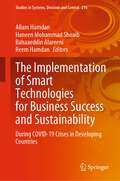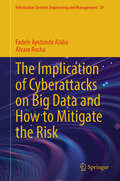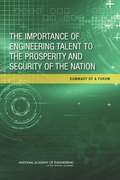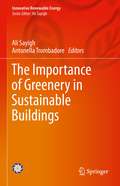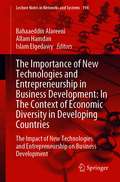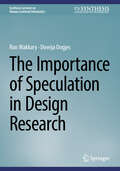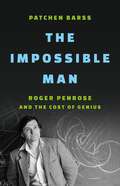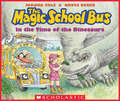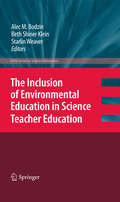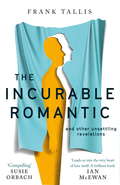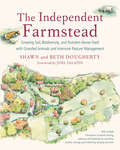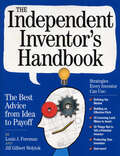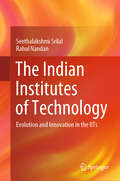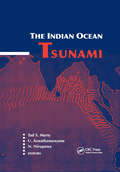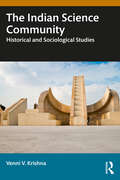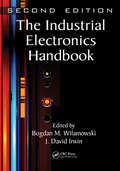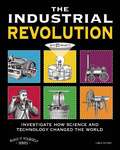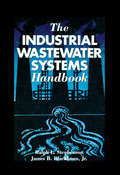- Table View
- List View
The Imperfect Environmentalist
by Sara GilbertActress, producer, mother, and imperfect environmentalist, Sara Gilbert understands how helping the environment can seem overwhelming. Between keeping up with work, friends, and kids, who has the time or money to maintain a compost pile, become an activist, or knit a sweater out of recycled grocery bags? Fortunately, we now know that small changes here and there in our everyday lives can make a big impact on the environment. We just need to know where to begin. That's where Gilbert comes in, with this tongue-in-cheek reference guide packed full of helpful information, available at your fingertips. Read it cover to cover or just open it up to a random page; you can take what you want from it when you want. Whether you've got money to burn or have to crash on a friend's couch, here are all of the eco-essentials to get the planet back on track, and you won't have to hug a single tree--unless tree-hugging is your thing. Sharing the basics on health and beauty, work and money, home and gardening, family and fitness, and more, The Imperfect Environmentalist cuts through the clutter--both in our homes and in our heads--and offers simple approaches to help us clear out the pollutants, put down the poisons, and begin to breathe easy again--one 100% recycled page at a time.Advance praise for The Imperfect Environmentalist "This book really opened my eyes. Then my eyes started stinging and tearing from all the toxins in the environment I'm now aware of. Thanks, Sara, I have a lot to do now."--Lisa Kudrow "Sara's passion and commitment to the environment have given me an awareness that I never had before about our planet. I learn from Sara every day and she makes me want to be a better person. See, you can teach an old dog new tricks."--Sharon OsbourneFrom the Trade Paperback edition.
The Implementation of Smart Technologies for Business Success and Sustainability: During COVID-19 Crises in Developing Countries (Studies in Systems, Decision and Control #216)
by Allam Hamdan Bahaaeddin Alareeni Haneen Mohammad Shoaib Reem HamdanIndustry 4.0 technologies identified as the main contributor to the digitalization era. New technology delivers optimal outputs by utilization of effective resource. Therefore, smart technologies that has inventive and creative objects became critical to enterprise; recent studies shows that its led enterprises business such as SMEs to considerable investments, which many organizations over the world attempt to use innovative technologies such as IoT and AI, these technologies have potential on sustainable business models. In addition to that, innovation usage in business models led to significant benefits towards sustainability concept in SMEs marketplace. Furthermore, Sustainability objectives refers to corporate sustainability term, which integrate enterprise operations with social, educational, environmental and economic benefits, as process of decision-making can impact during sustainability implications. This book focus on the implementation of smart technologies for growing business, the book includes research articles and expository papers on the applications of technology on Decision Making, Healthcare, Smart Universities, Advertising, E-marketing, Public Sector and Digital Government, FinTech, RegTech. Some researchers also discussed the role of smart technologies in the current COVID-19 pandemic, whether in the health sector, education, and others. On all of these, the researchers discussed the impact of smart technologies on decision-making in those vital sectors of the economy.
The Implication of Cyberattacks on Big Data and How to Mitigate the Risk (Information Systems Engineering and Management #39)
by Alvaro Rocha Fadele Ayotunde AlabaThis comprehensive book explores the challenges posed by cyberattacks on big data systems and their corresponding mitigation strategies. The book is organized into logical chapters, each focusing on specific aspects of the subject, ensuring clarity and depth in addressing the multifaceted nature of the problem. The introductory chapter provides a clear overview of the problem, introducing the prevalence of cyberattacks on big data systems, the motivation for addressing these risks, and the goals of the book. It also outlines the goals of the book, such as identifying vulnerabilities, evaluating mitigation strategies, and proposing integrated solutions. The second chapter provides a detailed examination of cyberattacks, emphasizing their implications for big data systems. It systematically categorizes tools and techniques available for mitigating these risks, including identity and access management (IAM), symmetric data encryption, network firewalls, IDPS, data loss prevention (DLP), SIEM, DDoS protection, and big data backup and recovery strategies. The book focuses on key mitigation techniques, such as IAM, encryption methods, network segmentation, firewalls, and intrusion detection systems. It also proposes an integrated cybersecurity model, combining these solutions for enhanced effectiveness against cyberattacks. The book also identifies research gaps and suggests areas for future research, such as adapting to emerging technologies and improving scalability in big data security frameworks. The book is a valuable resource for cybersecurity professionals, researchers, and practitioners aiming to address the unique challenges posed by cyberattacks on big data systems. The book aims to equip various professionals with the knowledge and strategies necessary to address the vulnerabilities associated with cyberattacks on big data environments.
The Importance of Engineering Talent to the Prosperity and Security of the Nation
by Steve OlsonThe quality of engineering in the United States will only be as good as the quality of the engineers doing it. The recruitment and retention of talented young people into engineering therefore need to be top national priorities, given the crucial importance of engineering to our prosperity, security, health, and well-being. Only 4. 4 percent of the undergraduate degrees awarded by US colleges and universities are in engineering, compared with 13 percent in key European countries (the United Kingdom, Sweden, Finland, Denmark, Germany, and France) and 23 percent in key Asian countries (India, Japan, China, Taiwan, South Korea, and Singapore). In the past, the United States has been able to attract engineering graduate students and professionals from other countries to meet the need for engineering talent in the public and private sectors. But other countries are providing increasingly attractive opportunities for engineers, with excellent salaries, facilities, and economic growth potential. The United States can no longer assume that the best engineering talent in the world will want to come to this country. "The Importance of Engineering Talent to the Prosperity and Security of the Nation" is the summary of a forum held during the National Academy of Engineering's 2013 Annual Meeting. Speakers discussed the opportunities and challenges of creation and wise use of engineering talent, and made recommendations for recruitment and retention strategies. This report assesses the status of engineering education in the U. S. and makes recommendations to promote and improve engineering education.
The Importance of Greenery in Sustainable Buildings (Innovative Renewable Energy)
by Ali Sayigh Antonella TrombadoreThis book covers the important aspects of greenery in buildings, both in the landscape and within buildings, examining how greenery improves comfort and appeal in sustainable buildings. The book is part of the World Renewable Energy Network’s drive to encourage architects and builders to use greenery as much as possible in their design to reduce energy consumption and provide a pleasant appearance and pleasing aspect to their buildings. It shows and demonstrates how widespread the use of greenery is in buildings, and the books 17 chapters were chosen from 12 different countries representing a truly global look at the use and benefit of using greenery in buildings. This book is aimed at architects, building construction authorities, urban planners, and policymakers to encourage the use of greenery in their future buildings and explain why it is important to do so.
The Importance of New Technologies and Entrepreneurship in Business Development: The Impact of New Technologies and Entrepreneurship on Business Development (Lecture Notes in Networks and Systems #194)
by Islam Elgedawy Allam Hamdan Bahaaeddin AlareeniThis book introduces the students, researchers and practitioners into the subject and enabling technologies and applications pertaining to of technology, entrepreneurship and business development through research articles, case studies etc. It is primarily intended for academic purposes for learners of computer Science, management, accounting and information systems disciplines, economics,- entrepreneurship. Publishing chapters in the book is new innovative idea to spread the book in the Middle East and Arab countries and make the book achieve more sales. As many students in all levels, graduates and undergraduates in addition to research, professionals are not able to get sufficient resources because of the language concern.
The Importance of Packaging Design for the Chemistry of Food Products
by Salvatore Parisi Giovanni Brunazzi Amina PerenoThis Brief defines reliable correlations between the food packaging design and its chemical features in terms of an 'integrated food product' (the synergistic union composed of the edible content and its container). A good design, as described in this Brief, implies the best choices from a series of possibilities, taking into account economical and commercial influences or limitations in the production and processing chain and the chemical interactions that can arise between the food containers and the contained edible material. This Brief highlights how the different requirements can be combined, while avoiding dangerous food risks originating from the chemical interaction between the container and the product. Different designs are critically analysed with relation to the effect on contained foods. The influences and resulting consequences of different possible food packaging designs are highlighted and discussed in selected case studies for some every-day products (like potato chips).
The Importance of Speculation in Design Research (Synthesis Lectures on Human-Centered Informatics)
by Ron Wakkary Doenja OogjesThis book explores speculation in design research in the field of human-computer interaction (HCI). The authors reveal how speculative reasoning in design research increases the capacity of HCI to address a wider array of social and research challenges. Speculation in design research employs (1) leaps of imagination, (2) diverse ways of knowing or epistemologies, (3) ethical reflexivity, (4) and makes alternate possibilities experiential. This book shows how each can be productively and critically applied together through existing, emerging, and new research approaches in HCI. The aim of this book is to generously see speculation as more than a form of critique or genre of design research, to instead be seen as broadly central to the material investigations that govern much of the field. In doing so, the book aims to expand the potential role of speculation in HCI and shows how speculation is applicable to a wide range of research goals, which, in turn, creates research approaches in new directions. In expanding the approach and methodology of speculation in HCI, the books draw inspiration from other disciplines and intersectional perspectives. By examining current, emerging, and possible new forms of speculation methods, this book will be of interest to undergraduate and graduate students in HCI as well as seasoned researchers and practitioners.
The Importance of Wood and Timber in Sustainable Buildings (Innovative Renewable Energy)
by Ali SayighThis book emphasizes the important message that architects and structural engineers must strive to ensure that the buildings they design and construct should not be major contributors to climate change. Rather, they should be exploring the use of green materials and building methods – such as timber, wood, and associated materials – in order to safeguard the environment. These sustainable materials are not only environmentally friendly, but they have the added benefit of being easy to manufacture, cost effective, often locally available, and easily replenished. Moreover, it has been demonstrated that wood and timber are viable materials in the construction of a wide variety of building types, including medium and high-rise buildings.The Importance of Wood and Timber in Sustainable Buildings brings together a distinguished group of contributors from different cultures and building traditions to address why now is the time to rethink our construction methods and explore replacing many of the carbon intensive materials that are currently being used with wood and timber.
The Impossible Man: Roger Penrose and the Cost of Genius
by Patchen BarssA "beautifully composed and revealing" (Financial Times) biography of the dazzling and painful life of Nobel Prize–winning physicist Roger Penrose—"a stunning achievement" (Kai Bird, American Prometheus). When he was six years old, Roger Penrose discovered a sundial in a clearing near his house. Through that machine made of light, shadow, and time, Roger glimpsed a &“world behind the world&” of transcendently beautiful geometry. It spurred him on a journey to become one of the world&’s most influential mathematicians, philosophers, and physicists. Penrose would prove the limitations of general relativity, set a new agenda for theoretical physics, and astound colleagues and admirers with the elegance and beauty of his discoveries. However, as Patchen Barss documents in The Impossible Man, success came at a price: He was attuned to the secrets of the universe, but struggled to connect with loved ones, especially the women who care for or worked with him. Both erudite and poetic, The Impossible Man draws on years of research and interviews, as well as previously unopened archives to present a moving portrait of Penrose the Nobel Prize-winning scientist and Roger the human being. It reveals not just the extraordinary life of Roger Penrose, but asks who gets to be a genius, and who makes the sacrifices that allow one man to be one.
The In the Time of the Dinosaurs (The Magic School Bus)
by Joanna ColeTo celebrate its 20th anniversary, Scholastic is re-releasing the ten original Magic School Bus titles in paperback. With updated scientific information, the bestselling science series ever is back!The classroom is decorated as Dinosaur Land, but Ms. Frizzle-inspired by an archeological dig-craves a more authentic experience. The Magic School Bus turns into a time machine and transports the class back millions of years to an adventure where they learn about dinosaurs, their habitats and diets, and even a Maiasaura nesting ground.
The Inclusion of Environmental Education in Science Teacher Education
by Starlin Weaver Beth Shiner Klein Alec BodzinIn the coming decades, the general public will be required ever more often to understand complex environmental issues, evaluate proposed environmental plans, and understand how individual decisions affect the environment at local to global scales. Thus it is of fundamental importance to ensure that higher quality education about these ecological issues raises the environmental literacy of the general public. In order to achieve this, teachers need to be trained as well as classroom practice enhanced. This volume focuses on the integration of environmental education into science teacher education. The book begins by providing readers with foundational knowledge of environmental education as it applies to the discipline of science education. It relates the historical and philosophical underpinnings of EE, as well as current trends in the subject that relate to science teacher education. Later chapters examine the pedagogical practices of environmental education in the context of science teacher education. Case studies of environmental education teaching and learning strategies in science teacher education, and instructional practices in K-12 science classrooms, are included. This book shares knowledge and ideas about environmental education pedagogy and serves as a reliable guide for both science teacher educators and K-12 science educators who wish to insert environmental education into science teacher education. Coverage includes everything from the methods employed in summer camps to the use of podcasting as a pedagogical aid. Studies have shown that schools that do manage to incorporate EE into their teaching programs demonstrate significant growth in student achievement as well as improved student behavior. This text argues that the multidisciplinary nature of environmental education itself requires problem-solving, critical thinking and literacy skills that benefit students' work right across the curriculum.
The Income Approach to Property Valuation
by Nick Nunnington Andrew Baum David MackminA classic textbook that has guided generations of students through the intricacies of property valuation, The Income Approach to Property Valuation remains a keen favourite amongst students and teachers alike. This new edition has been thoroughly revised and updated to meet the increasingly international perspectives of modern Real Estate students. The links between theory and practice are clearly demonstrated throughout, with a range of new international case studies and practice-based examples. The Income Approach to Property Valuation teaches readers: how to analyse market rents and sales prices to derive market evidence to support an opinion of market value; the investment method of valuation and how it is applied in practice; how specific legal factors can impact on market value when they interfere with market forces; what the market and the profession may consider to be the 'right' methodology in today's market place; and how to use spreadsheets in valuation. This extensively revised new edition is perfect both for students on Real Estate courses worldwide and for professional candidates working towards their final assessment of professional competence (APC) for the Royal Institution of Chartered Surveyors, needing to demonstrate a valuation competence at levels 2 and 3.
The Incredible Talking Machine
by Jenni SpanglerPull back the curtain and enter a world where mystery and magic take centre stage . . . Twelve-year-old Tig works at the Theatre Royale, cleaning, selling tickets and doing anything else that is asked of her by her tyrannical boss, Mr Snell. But Tig will do whatever it takes to get closer to her dream – to become a Stage Manager and spend her days inventing new ways to imagine and build the intricate machinery and props that bring the exciting productions to life! But when a strange new act – a talking machine – arrives at the Theatre Royale, it moves and behaves in a way that Tig just can&’t work out. It&’s as though it&’s alive somehow . . . And when the machine appears to be hiding a dangerous secret, Tig must race against time to solve the mystery, before everything and everyone she cares about is lost forever. A gloriously gothic adventure from an original new voice in middle-grade. A gloriously gothic adventure with a magical twist from an original new voice in middle-grade. Perfect for fans of Michelle Harrison, Sophie Anderson and Emma Carroll. Praise for Jenni Spangler&’s debut novel, THE VANISHING TRICK: A thrilling, original, evocative and eerie tale - I adored it!&’ Michelle Harrison, author of A Pinch of Magic 'A thrilling page-turner. Madame Pinchbeck is a gloriously Dickensian villain&’ Abi Elphinstone, author of Sky Song 'Ghosts, gadgets, likeable villains and unlikely heroes: The Vanishing Trick is a dark and dazzling adventure&’ Emma Carroll, author of Letters from the Lighthouse 'A completely enthralling tale, oozing with atmosphere and originality&’ Catherine Doyle, author of The Storm Keeper's Island
The Incurable Romantic: and Other Unsettling Revelations
by Frank Tallis'Frank Tallis brings a lifetime's clinical experience and wise reflection to a condition that, by its own strange routes, leads us into the very heart of love itself. This is a brilliant, compelling book' Ian McEwanLove is a great leveller. Everyone wants love, everyone falls in love, everyone loses love, and everyone knows something of love's madness. But the experience of obsessive love is no trivial matter. In the course of his career psychologist Dr Frank Tallis has treated many unusual patients, whose stories have lessons for all of us.A barristers' clerk becomes convinced that her dentist has fallen in love with her and they are destined to be together for eternity; a widow is visited by the ghost of her dead husband; an academic is besotted with his own reflection; a beautiful woman searches jealously for a rival who isn't there; and a night porter is possessed by a lascivious demon. These are just some of the people whom we meet in an extraordinary and original book that explores the conditions of longing and desire - true accounts of psychotherapy that take the reader on a journey through the darker realms of the amorous mind.Drawing on the latest scientific research into the biological and psychological mechanisms underlying romance and emotional attachment, The Incurable Romantic demonstrates that ultimately love dissolves the divide between what we judge to be normal and abnormal.
The Incurable Romantic: and Other Unsettling Revelations
by Frank Tallis'Frank Tallis brings a lifetime's clinical experience and wise reflection to a condition that, by its own strange routes, leads us into the very heart of love itself. This is a brilliant, compelling book' Ian McEwanLove is a great leveller. Everyone wants love, everyone falls in love, everyone loses love, and everyone knows something of love's madness. But the experience of obsessive love is no trivial matter. In the course of his career psychologist Dr Frank Tallis has treated many unusual patients, whose stories have lessons for all of us.A barristers' clerk becomes convinced that her dentist has fallen in love with her and they are destined to be together for eternity; a widow is visited by the ghost of her dead husband; an academic is besotted with his own reflection; a beautiful woman searches jealously for a rival who isn't there; and a night porter is possessed by a lascivious demon. These are just some of the people whom we meet in an extraordinary and original book that explores the conditions of longing and desire - true accounts of psychotherapy that take the reader on a journey through the darker realms of the amorous mind.Drawing on the latest scientific research into the biological and psychological mechanisms underlying romance and emotional attachment, The Incurable Romantic demonstrates that ultimately love dissolves the divide between what we judge to be normal and abnormal.
The Independent Farmstead: Growing Soil, Biodiversity, and Nutrient-Dense Food with Grassfed Animals and Intensive Pasture Management
by Beth Dougherty Shawn DoughertyWith in-depth information on electric fencing, watering, and husbandry for ruminants, poultry, and pigs, plus butchering, dairying, and more&“If we work hard, we sleep well.&”Twenty years ago, when authors Shawn and Beth Dougherty purchased the land they would come to name the Sow&’s Ear, the state of Ohio designated it &“not suitable for agriculture.&” Today, their family raises and grows 90% of their own food.Such self-sufficiency is largely the result of basing their farming practices around intensive pasture management. Pioneered by such luminaries as Allan Savory, Greg Judy, and Joel Salatin, the tenets of holistic grazing—employed mostly by larger-scale commercial operations—have been adapted by the Doughertys to fit their family&’s needs. In The Independent Farmstead, The Sow&’s Ear model for regenerating the land and growing food—&“the best you ever tasted&”—is elucidated for others to use and build upon.In witty and welcoming style, The Independent Farmstead covers everything from choosing a species of ruminant and incorporating it into a grass-based system to innovative electric fencing and watering systems, to what to do with all of the milk, meat, and, yes, manure that the self-sustaining farm produces. Within these pages, the Doughertys discuss how to:Find and improve poor, waste, or abused land and develop its natural water resources;Select and purchase the appropriate ruminant for regenerating your farmstead;Apply fencing strategies and pasture management basics;Implement basic, uncomplicated food processing, including large and small animal butchering and cheese making; andIntegrate grass, gardens, and livestock to minimize or eliminate the need for off-farm inputs.As the Doughertys write, more and more people today are feeling &“the desire for clean, affordable food, unmodified, unprocessed, and unmedicated and the security of local food sourcing for ourselves and our children.&” The Independent Farmstead is a must-have resource for those who count themselves as part of this movement: both new and prospective farmers and homesteaders, and those who are interested in switching to grass-based systems. Best of all it&’s the kind of rare how-to book that the authors themselves view not as a compendium of one-size-fits-all instructions but as &“the beginning of a conversation,&” one that is utterly informative, sincere, and inspiring.
The Independent Inventor's Handbook: The Best Advice from Idea to Payoff
by Louis Foreman Jill Gilbert WelytokHow do you actually turn a million-dollar idea into a million dollars? From scribble-on-the-napkin to product-on-the market, The Independent Inventor's Handbook explains everything a potential inventor needs to know and the tools he or she needs to use to take a raw concept and turn it into reality. <P><P>Written by Louis J. Foreman, creator of the PBS series Everyday Edisons and a holder of multiple patents, together with patent attorney Jill Gilbert Welytok, here's a book that speaks directly to the inventive American—the entrepreneur, the tinkerer, the dreamer, the basement scientist, the stay-at-home mom who figures out how to do it better. (over one million of them file patents each year.) <P><P>Here is everything a future inventor needs: Understanding the difference between a good idea and a marketable idea. Why investing too much money at the outset can sink you. The downside of design patents, and how best to file an application for a utility patent. Surveys, online test runs, and other strategies for market research on a tight budget. Plus the effective pitch (hint: never say your target audience is "everyone"), questions to ask a prospective manufacturer, 14 licensing land mines to avoid, "looks-like" versus "works-like" prototypes, Ten Things Not to Tell a Venture Capitalist, and how to protect your invention once it's on the market. Appendices include a glossary of legal, manufacturing, and marketing terms, a sample nondisclosure agreement, and a patent application, deconstructed.
The Indian Institutes of Technology: Evolution and Innovation in the IITs
by Seethalakshmi Srilal Rahul NandanThis book aims to bring forth the achievements and innovations from the Indian Institutes of Technology (IITs). The IITs are premier institutes of engineering and technology education and research in India. This book showcases the evolution of IITs and highlights their role as incubators of innovation, research and entrepreneurship. From creating India's Air Quality Index to research in earthquake mitigation and nanotechnology to cutting edge innovations across engineering disciplines, this volume highlights the achievements of these decades old Indian institutions. Written by experienced journalists after years of research, interviews and conversations with academic and institutional leaders, the book weaves together a story of the IITs and their pivotal role in transforming teaching, learning, research and innovation that drives the progress of technology in India. Written in a manner accessible to a general audience, the book will be of interest to a broad spectrum of readers, including researchers, students, institutional leaders, policy makers, and the general public.
The Indian Ocean Tsunami
by U. Aswathanarayana Tad S. Murty Niru NirupamaThe Indian Ocean tsunami of December 2004 is considered to have been one of the worst natural disasters in history, affecting twelve countries, from Indonesia to Somalia. 175,000 people are believed to have lost their lives, almost 50,000 were registered as missing and 1.7 million people were displaced. As well as this horrendous toll on human life
The Indian Science Community: Historical and Sociological Studies
by Venni V. KrishnaThis book focuses on the historical and sociological dimensions of scientists working in laboratories in India, offering insights into the historical, sociological and policy factors that shape scientific pursuits. It illuminates the challenges, accomplishments and the evolving role of science in societal development.The author initiates a broader discourse on the interplay between scientific advancements, societal contexts and policy frameworks. The book fosters a deeper understanding of science's role in shaping India’s social fabric and contributing to the global scientific dialogue. It also explores issues such as brain drain, science activism and the conflict between university- and government-run models of science.Lucid and topical, the book will be of considerable interest to both social and natural scientists, as well as the general academic community, including research students in science, technology, history, social history of science, science and technology studies and innovation policies.
The Industrial Electronics Handbook - Five Volume Set (The\electrical Engineering Handbook Ser.)
by J. David Irwin Bogdan M. WilamowskiIndustrial electronics systems govern so many different functions that vary in complexity-from the operation of relatively simple applications, such as electric motors, to that of more complicated machines and systems, including robots and entire fabrication processes. The Industrial Electronics Handbook, Second Edition combines traditional and new
The Industrial Information Technology Handbook (Industrial Electronics)
by Richard ZurawskiThe Industrial Information Technology Handbook focuses on existing and emerging industrial applications of IT, and on evolving trends that are driven by the needs of companies and by industry-led consortia and organizations. Emphasizing fast growing areas that have major impacts on industrial automation and enterprise integration, the Handbook covers topics such as industrial communication technology, sensors, and embedded systems.The book is organized into two parts. Part 1 presents material covering new and quickly evolving aspects of IT. Part 2 introduces cutting-edge areas of industrial IT. The Handbook presents material in the form of tutorials, surveys, and technology overviews, combining fundamentals and advanced issues, with articles grouped into sections for a cohesive and comprehensive presentation. The text contains 112 contributed reports by industry experts from government, companies at the forefront of development, and some of the most renowned academic and research institutions worldwide. Several of the reports on recent developments, actual deployments, and trends cover subject matter presented to the public for the first time.
The Industrial Revolution
by Carla Mooney Jenn VaughnImagine a world without brand-name products! Before the Industrial Revolution it was not possible to produce enough of the same item to have a brand, but in 100 years the world changed from make-your-own everything to a society of manufactured goods. The Industrial Revolution: Investigate How Science and Technology Changed the World introduces the dynamic individuals who led this revolution and how their innovations impacted the lives of everyone, rich and poor, city-dwellers and farmers alike. Elements of history, biography, civics, science, and technology combine with activity-driven enrichment projects that kids can do with minimal supervision. Activities include creating a water-powered wheel, designing a steam ship, building a telegraph machine, and making a pinhole camera.
The Industrial Wastewater Systems Handbook
by Ralph L. Stephenson James B. Blackburn, Jr.From explanations of laws and regulations to hands-on design and operation-the Handbook has it covered!

